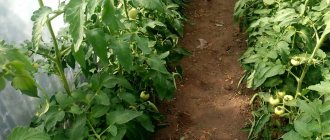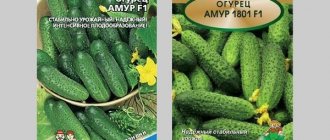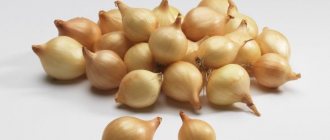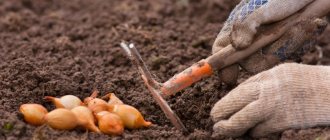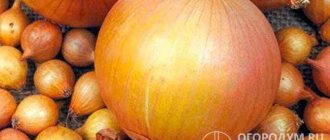Belorussian cabbage description of the variety, photo, characteristics, reviews, the yield of which is presented in this article, was bred by breeders from Belarus in 1937. Until now, it is very popular among Russian gardeners for its high yield and resistance to cold weather. On the contrary, Belorusskaya 85, Belorusskaya 455 and others appeared.
The Belorusskaya cabbage variety does not crack and is not afraid of cold weather. Belorusskaya 455 is susceptible to clubroot and vascular bacteriosis.
Description of the variety
White cabbage variety Belorusskaya 455 is a cold-resistant, light-loving vegetable crop. Seeds germinate at a temperature of +5 degrees. The plant easily tolerates frosts within -4 degrees.
To plant white cabbage, you need to choose an open place. This will ensure less damage by insects. In addition, with long daylight hours, an excellent harvest is formed.
A late-ripening variety of white cabbage. Heads of cabbage reach technical capacity in Belorusskaya 455 in 120-130 days, in Belorusskaya 85 a little more - 140-150 days from the moment of germination. The root system is weak, located in the top layer of soil at a distance of 25-30 cm. And the outer stalk itself does not exceed 10 cm.
Leaves and cabbage
- The Belorusskaya variety stands out for its large dark green outer leaves with a waxy coating. They are round-flat in shape with a smooth surface. The edges of the leaves have medium waviness. The veins are thin, almost invisible.
- The leaves forming the head of cabbage are light green and bleach by the time they are technically ripe. This is clearly visible when cut through cabbage. There is no space between the leaves, so the heads of cabbage are tight and dense. The heads of cabbage of this variety are so tight that hail cannot penetrate them.
- According to the description of the Belorusskaya cabbage variety, the rosette is raised above the ground, semi-spreading, reaching a diameter of 90 cm. This must be taken into account when planting seedlings in open ground. Belarusian cabbage quickly sets heads at a temperature of 20-25 degrees.
In the heat of July, when the air temperature is above 30 degrees, the formation of heads of cabbage slows down.
- During this period, you need to install a sprinkler over the cabbage beds to cool the soil and air around the plants.
- The weight of heads of cabbage variety Belorusskaya 455 reaches 4-4.5 kg, and if agricultural standards are observed, it can be even higher. The yield of the variety per square meter is about 8 kg. Cabbage variety Belorusskaya 85 is less productive, the weight of heads is from 2.4 to 3 kg. The taste of both types is excellent.
Diseases
The Belorusskaya variety is susceptible to clubroot. To prevent the plant from encountering this disease, it is necessary to make beds annually in different places on the site. After harvesting, cabbage leaves and roots should not be used as future fertilizer, even if they are healthy and do not have any signs of disease. It is advisable to dry and burn all remains.
Irina Olegovna, Moscow, 45 years old.
I would like to share my experience of growing the “Belorusskaya” variety from the Aelita company. This year I purchased seeds from this particular company, although previously I had always purchased from. The variety is medium late, it was written on the packaging that it is preferable for storage and fermentation. But from experience I will say that cabbage spoils very quickly, after 2-3 months, so either ferment it or grow a little so that you have time to eat it. I plant the seeds in April in a greenhouse. I plant them together with tomatoes. I water the seeds periodically until shoots appear. The seeds from this company sprouted very well, I already transplanted them into the OG on June 3rd. I planted the seedlings at a distance of 40 cm, with a distance of 60 cm between the rows. The seedlings took root well and gradually began to gain growth. This year I was a little late in harvesting, but the heads of cabbage did not crack, which is good news. I recommend this variety for cultivation, as it is quite tasty and juicy. But at the same time, immediately take into account the fact that cabbage will not be stored for a long time. Therefore, either ferment it or grow it in small quantities.
Mikhail Ivanovich, Ryazan region, 43 years old.
We have been growing Belorusskaya 455 all our lives. The taste is excellent, it does not last as long as we would like, but it has delicate leaves, unlike many later varieties that are rough. We don’t like to experiment, although our neighbor has already told us more than once to try Kolobok and Amager, supposedly the latter is generally stored until the summer. In the village, we mainly grow Atria.
Anna Yuryevna, Voronezh, 43 years old.
Previously, Belarusian was grown. But she was constantly attacked by insects. They used various pesticides, and then abandoned it in favor of hybrids.
White cabbage is considered one of the oldest vegetable crops. It began to be grown in the 20th century AD in Ancient Rome and Ancient Greece. But in those days the vegetable did not have heads. Cabbage appeared due to cross-pollination of biennial plants of the family.
Belarusian cabbage is a product of breeding work of Russian seed growers. The variety first became known in 1937. Many years have passed since then, but the popularity of the frost-resistant and productive variety has not fallen. On the contrary, new options have appeared - Belorusskaya 85, Belorusskaya 455 and other varieties. The article will give detailed characteristics and features of growing cabbage.
Characteristics
Whatever variety of vegetable crops is considered, there are always pros and cons.
Positive sides
Based on the description of Belarusian cabbage, gardeners highlight the advantages of the variety, as they write in reviews:
- High yield.
- Excellent taste properties of cabbage, versatility of use.
- Dense heads of cabbage do not crack even at technical ripeness.
- Excellent transportability.
- This is not a hybrid, so you can get your own seeds if you wish.
Flaws
If we talk about the disadvantages of the Belorusskaya cabbage variety, it is rather a weak immunity to diseases such as clubroot and vascular bacteriosis.
Comment! The older the cabbage, the less it gets sick, so prevention begins at the seedling level.
Of the minuses it should be noted:
- Pests love her;
- requires abundant watering;
- does not tolerate transplantation well.
Despite its shortcomings, Belarusian cabbage is loved for its excellent taste and beneficial properties.
Advantages
Belorusskaya cabbage 455 is grown primarily for fresh use. The variety is also perfect for pickling. Belorusskaya cabbage 455 is stored for a relatively short time, only until December, maximum January.
The composition includes the following components:
- 8.4-10.7% dry matter;
- 4.4-6.7% sugars;
- 24-39 mg of ascorbic acid.
Based on the description of Belarusian cabbage, we can conclude that the positive features of the variety include:
- high level of productivity of the variety;
- excellent taste characteristics;
- crack resistance;
- tendency to long-term transportability.
Among the disadvantages, it should be noted the tendency to clubroot and vascular bacteriosis. Pests also love Belarusian cabbage.
Growing seedlings
To get a good harvest, Belorusskaya cabbage seeds are sown in mid-May. This sowing period allows you to obtain heads of cabbage suitable for processing and storage. To obtain an earlier harvest of white cabbage, you can sow some of the seeds in early May.
Before sowing, planting material is not soaked. But it won’t hurt to treat it in a pink solution of potassium permanganate. The seeds of the variety are sown in fertile soil, previously filled with boiling water, to a depth of no more than 1 cm.
Shoots appear promptly on the 4th or 7th day. You need to immediately provide the seedlings with optimal lighting, otherwise the Belarusian cabbage will stretch out, which has a negative effect on the yield.
You can sow cabbage seeds in a nursery or directly in separate containers, so as not to dive. In this case, 2-3 seeds are placed in each glass. When the plants grow up, leave one, the strongest seedling.
How and when to plant
Amager cabbage seedlings, like Belorussian cabbage, should be planted in late March - mid-April. To prepare the substrate for seedlings, it is necessary to use turf soil - 20%, 75% peat, 6% river sand. The acidity of the soil should be neutral.
Place the prepared soil in wooden boxes. 2-3 days before planting, treat it with Alirin-B solution, which has an antifungal effect.
Now you can make furrows, the depth of which is 1 cm. A distance of 3 cm should be maintained between them. Sow the seeds and sprinkle with soil mixture.
Place the box on the windowsill and keep the seedlings at a temperature of 18-20 degrees. As soon as the first shoots appear, reduce the temperature to 13-15 degrees. This will prevent the seedlings from stretching. It is also worth learning more about how to grow Brussels sprouts in open ground, and what you should pay attention to.
Video on how to plant cabbage:
Now you can use two ways to grow seedlings:
- Gradual replanting of plants with picking. As soon as the first shoots have been formed, the seedlings are dived. There should be a distance of 1.5 m between seedlings. After 7 days, transfer the plant to a cassette where there are 3x3 cm sections. Dig them down to the cotyledon leaves. After 14 days, you can send each sprout with a lump of earth into a separate glass, while deepening it to the first leaves.
- Replanting immediately after germination. To do this you will have to choose strong plants. Transplant it from a wooden box into a container where the soil depth is 6-7 cm. Only the main root needs to be shortened by 2/3 of its length. Then the root system will become branchy.
Cabbage transplant
You can also sow planting material directly into separate cups. Then send 2 seeds into each container, and after germination, remove one sprout.
If the weather is cloudy, then the plants need to be provided with additional lighting. This will allow you to get strong and healthy seedlings.
It is worth understanding how to grow a good harvest of cabbage, and exactly how to do it.
And here you can watch a video on how to plant broccoli for seedlings.It will also be useful to learn about what to plant cauliflower after, and how to choose the right vegetable: //gidfermer.com/sadovodstvo/ovoshhevodstvo/rassada/sroki-cvetnoj-kapusty.html
But how Broccoli cabbage is grown from seeds, and what you should pay attention to when growing, is indicated here.
Seedlings respond positively to temperature fluctuations during the day:
- on a sunny day – 15-17 degrees;
- on a cloudy day – 13-15 degrees;
- at night – 7-10 degrees.
If these recommendations are followed, the seedlings will not become too elongated.
Watering young plants should be done with water at room temperature. In the room where the seedlings are located, it is necessary to ensure fresh air circulation. A couple of days before planting in open ground, watering should be reduced, and on the day of planting, on the contrary, the soil should be thoroughly moistened.
Before planting, seedlings must be well hardened. To do this, take the boxes with plants into fresh air, the temperature of which is more than 8 degrees. If temperatures rise, then the seedlings can be left outside just covered with film.
When the time comes to transplant plants into open ground, they should have 6 leaves and a developed root system. Kolobok cabbage seedlings, like the Belorusskaya variety, should be planted in open ground in mid-May.
Araucana chicken breed: description, care, breeding || General characteristics || Varieties || Features of caring for adult chickens and chickens, their breeding || How to breed? || Diseases and prevention
Landing in open areas
If you live in an area with a warm climate and there are no severe frosts, then you can immediately plant cabbage in open ground. Install supports for the film in the area. In this way, it is possible to warm the soil before planting cabbage.
At the end of April, it is worth making furrows in the area, the distance between which will be 10 cm. Place the seeds there, sprinkle with soil and water. Now stretch the film over the supports, which can be removed during the day. As soon as the first shoots appear, it is worth picking, leaving a distance of 6 cm between them. If there are severe frosts at night, then it is necessary to provide additional insulation. It will also be useful to learn more about how to germinate cauliflower seeds.
In the video - planting cabbage in open areas:
After 1.5 months, you can transplant the sprouts into wells prepared in advance. Plant them at a distance of 20-25 cm. Compact the soil and water it with water.
Landing in the ground
Belarusian cabbage is planted from the nursery in mid-June. Healthy seedlings should have a thick and strong root slightly thicker than a pencil and 5-6 leaves.
Plants are planted on loamy, well-fertilized soil in an open area. If you suspect it is highly acidic, add wood ash before digging.
The best location for cabbage beds is from north to south so that each plant receives enough heat and light. Planting is done in the late afternoon so that the seedlings have time to cope with stress before sunrise. If it rains, you can plant Belorusskaya cabbage seedlings during the day.
Advice! To improve the soil structure, mustard is sown in May, then the seedlings are dug up.
Cabbage variety Belorusskaya 455 is planted on medium-height beds in two rows. The distance between the ridges should be at least 50 cm. The holes are made according to the 50x50 pattern. A smaller distance will result in overlapping leaves.
The plant is lowered into moist soil up to the first leaves, the soil is squeezed well and watered. If hot weather is expected the next day, it is advisable to shade the plantings for two days.
Features of care in the ground
Caring for the Belorusskaya variety of white cabbage is simple, and novice gardeners can handle it. But we will still pay attention to some points.
Watering requirements
White cabbage Belarusian is demanding not only on fertile soils, but also on watering. The root system should always be moist.
- It is better to water in the late afternoon, when the sun's rays do not burn the plants.
- In the first days, the procedure is repeated daily. One root needs 2 liters of water. The soil is not loosened for seven days after planting. This is then done before watering so that the water penetrates faster to the root system.
- Stop watering white cabbage of the Belorusskaya variety 10 days before cutting the heads.
Weeding and loosening
Weeds are also removed during the season. After all, they are the breeding grounds for diseases and pests.
Constantly weeding cabbage will help get rid of weeds and allow you to immediately notice pests.
Top dressing
As for fertilizing, it is carried out in the same way as for other varieties. The most commonly used infusions are mullein, chicken manure, and fermented herbs. White cabbage of the Belarusian variety responds well to foliar feeding with ammonia and iodine. Once a week, it is advisable to sprinkle the plants with wood ash.
Pest Control
The description indicated that the Belorusskaya variety is especially loved by insects. Frequent guests are midges and caterpillars. You can get rid of them using a soap solution. They spray the cabbage with it and dust it with dry ash on top.
To get rid of caterpillars, special means are used. Cabbage is processed in the late afternoon in dry, windless weather.
Caterpillars are the “children” of the cabbage butterfly. She is afraid of the smell of marigolds. These flowers are planted between cabbage seedlings. The smell of valerian repels the butterfly. This medicine (vial) is diluted in half a bucket and sprayed on the plantings.
Subtleties of cultivating Belarusian cabbage
To plant seeds of this variety of cabbage for seedlings, it is best to choose a turf type of soil. It is best to avoid soils with a high content of mineral fertilizers. The optimal temperature for seed germination is considered to be 4-5 degrees Celsius.
It should be noted that the Belorusskaya 455 cabbage variety has a high level of resistance to low temperatures. This makes it possible to plant seedlings from early April to mid-May, depending on the region. During the planting process, they adhere to the 60x50 centimeter pattern.
If cool weather persists for a long time and return frosts constantly occur, then newly planted seedlings should be protected with film. During the day, in sunny weather, it can be opened slightly so that the cabbage can breathe and harden, and at night it is best to cover it back with film.
The hybrid has excellent taste and commercial qualities. Cabbage is resistant to cracking and many cruciferous diseases. Read more…
The description of Belorusskaya cabbage focuses on the fact that the variety loves moisture very much. Water it often and loosen the soil periodically
But at the ripening stage it is recommended to reduce watering. Mineral and organic fertilizers are used as fertilizing. Dolomite flour is an excellent remedy for pest control.
Disease Prevention
Since the Belorusskaya variety is often affected by clubroot, it needs to be planted in a new place every year. In the fall, after harvesting, cabbage roots should never be placed in a compost heap. Even if there are no signs of disease, all cabbage remains are destroyed.
The Belorusskaya 455 variety has low immunity to vascular bacteriosis. This disease is popularly called black rot. You can notice it by the black veins.
Another problem is wet rot, which appears when plants are affected by vascular bacteriosis. Having noticed a disease, the plants need to be pulled out and destroyed.
Warning! Heads of cabbage with any signs of disease cannot be stored.
Harvesting
Technical ripeness of the variety occurs in late September or early October. As we have already said, watering stops within two weeks. Felling begins on a sunny day after lunch, so that the sun eats up the frost or dew. The chopped cabbage is laid out on the floor to dry, and then put away for storage.
You immediately need to decide how the chopped cabbage will be used. If it is intended for winter storage, then when cutting it, leave a long stalk. For it, the head of cabbage is hung in the cellar or basement. All other forks are cut down without an external stump. Here they are, these handsome heads of cabbage, in the photo!
Attention! For storage, choose medium-sized heads of cabbage, tight, without signs of disease or any defects.




